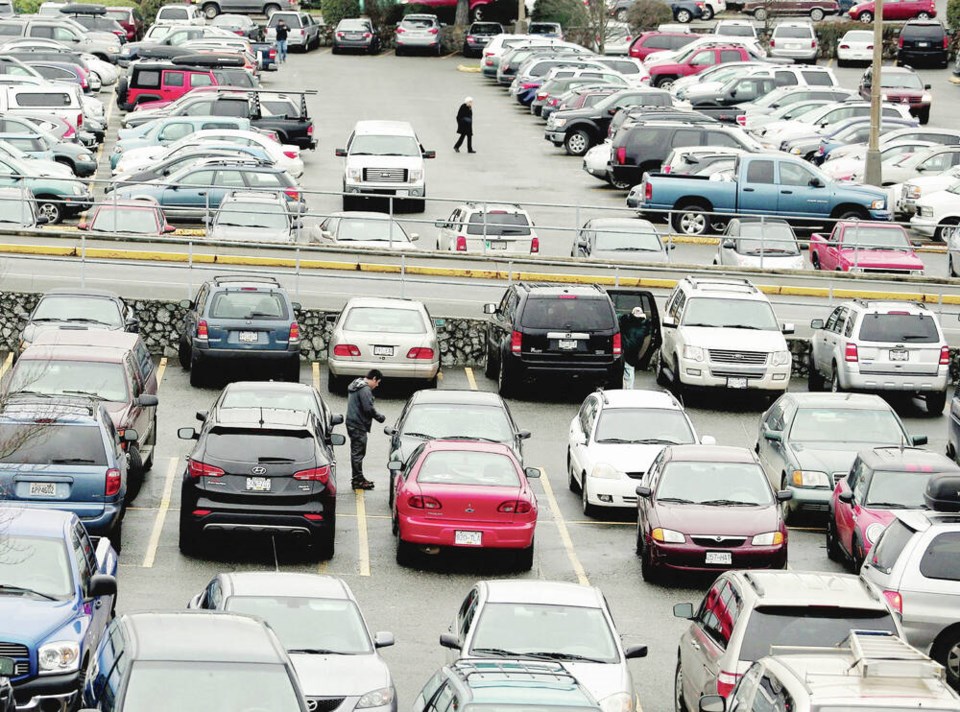The warm glow of the holidays has faded. It’s mid-January, and we face an unrelieved wintry forecast.
We battled crowds for parking spots downtown in December, bringing liveliness to the city’s core and increasing our determination to make our time there count in purchases.
Our small get-togethers with friends and family at restaurants helped the season feel festive and almost “normal.” The ease of ordering online made sure we didn’t do without, even if highway closures affected delivery schedules.
And now the holiday bills are arriving. The recent spate of snow and freezing rain adds to the stress of the short days. The latest round of COVID-related public-health restrictions has its own dampening effect. The cost of food at the grocery store is rising, reflecting the highest inflation rates in decades.
If a number of polls designed to determine our holiday-related plans and intentions are any indication, the contrast of December and January moods emphasizes our own rather confused state of mind.
Take the late-2021 holiday shopping surveys. They all announced that we intended to splash out and release that pent-up desire to buy and consume that was so muted in 2020.
The Retail Council of Canada’s annual Holiday Shopping Survey reported that we intended to return to pre-pandemic holiday traditions wherever possible — in-person celebrations, shopping at brick-and-mortar stores, and more gift giving.
In PriceWaterhouse Cooper’s holiday outlook, we reported that our personal finances were strengthening, we felt the country’s economic outlook was improving, and we planned to significantly increase our holiday spending compared to last year. Those surveyed said they expected to spend, on average, $1,420, or 29 per cent over 2020 levels. Millennials were projected to be the biggest spenders.
Deloitte Canada’s Holiday Retail Outlook survey topped the lot. It indicated that we expected to spend about $1,841 on average on the winter holidays — up 31 per cent over 2020 and eight per cent over 2019.
But those surveys were conducted earlier in the fall, before we heard about Omicron.
And Omicron may have been the turning point. After all the vaccinations, discipline and effort, public-health restrictions, business shutdowns and travel advisories were imposed again. How discouraging.
The New Year’s resolution-goals-priorities polls of December show a shift. We were no longer preoccupied with spending and enjoying ourselves over the holidays but instead were focused on the dismal state of our personal finances.
According to a Global News Ipsos poll conducted between Dec. 10 and 15, four in 10 of us said they intended to make a New Year’s resolution about their finances — with nearly half of those looking to pay off debts.
Less than half (45 per cent) of the poll respondents said they wanted to commit to a budget, while over a third aimed to save for retirement or invest more over 2022.
In an early December CIBC survey, 47 per cent of the 1,500 people polled said that living without financial stress was a top priority for 2022. The survey also found that 20 per cent of respondents said debt repayment would be their No. 1 goal for the new year.
And a poll conducted by Nanos Research just before the holidays suggested Canadians are more likely to say their personal finances are worse now than they were before the pandemic started. Unsurprisingly, more younger Canadians — 41 per cent of those aged 18-34 — felt that way than older Canadians did (25 per cent of those aged over 55).
Admittedly, the people surveyed in December are likely not the same individuals captured in the holiday-spending polls.
However, if the surveys were designed and implemented to eliminate selection bias, the responses should be generally representative of the population, with a stated and acceptable standard of error.
The difference in tone and type of responses may also lie in the point of the surveys, which determine the questions asked.
Those factors would psychologically prime the respondents to think in certain directions — about responsibilities and long-term goals and plans instead of, for example, short-term holiday pleasures.
The shift might also be due to the current, unlooked-for fourth wave of the pandemic.
We might also be impulsive or confused about our own priorities and values.
Or, now that the glitter of the holidays has faded, we can no longer ignore the muck of January and real life.



